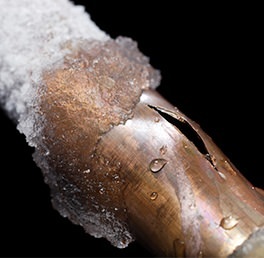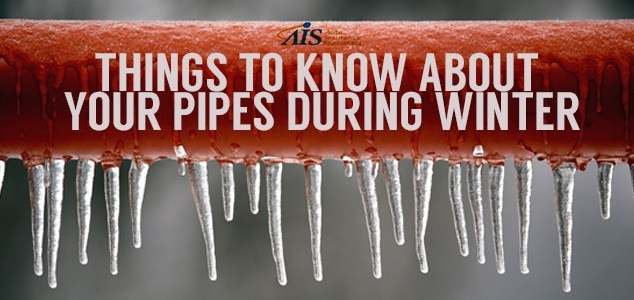As winter tightens its grip on the U.S., homeowners must prepare for the many challenges it brings with it. One of these is frozen pipes, which frequently occur in unheated areas of the home and outside. When temperatures drop below freezing, the water inside these pipes freeze too. Homeowners who are lucky simply end up with no water for a short period. Those who are unlucky end up with broken pipes that spew water once the ice thaws causing expensive interior water damage. To prevent either of these scenarios from occurring on a frigid winter night, we suggest that homeowners review their homeowners insurance and take the following precautions now so that they aren’t inconvenienced later.
Locate At-Risk Pipes

The first step is to inspect the house and locate pipes that are at risk of freezing. If you have a crawl space there are almost certainly water pipes in it. However, even indoor pipes are at risk if they are in unheated parts of the home, such as unheated basements and garages. In addition, pipes that run along outside walls of the home have little insulation and are also susceptible to freezing. Finally, don’t forget about outdoor water spigots, both attached to the home and free-standing.
Insulate

The best way to prevent exposed pipes from freezing is to wrap them in insulating material, which keeps the water temperature warmer during cold spells. Foam insulating pipe sleeves provide the best protection in mild climates that experience only short periods of below freezing temps. These are easy to install and only require cutting to fit pipe lengths. Even ¼ inch of newspaper wrapped around pipes provides enough insulation to prevent freezing in mild climates. Those in more frigid climates should opt for electrical heat tape that wraps around pipes and plugs into an electrical outlet. The tape automatically supplies low level heat when temperatures dip below freezing.
Take Emergency Measures

If a freeze is imminent, there are some tactics you can take to protect your home from damage. Open the faucets slightly to allow water to come out at a very slow trickle. This keeps the water moving and helps deter freezing. Next, open all cabinet doors under sinks to allow warm interior air to circulate around them and raise the temperature. If you have water pipes in the garage or basement, keep all exterior doors closed and open doors from the interior of the house to allow warm air to circulate in those areas.
Frozen water pipes can be a costly home repair, not to mention a major inconvenience. Taking a few moments now to prepare pipes for winter means that homeowners can enjoy the winter months and know that their homes are protected from damage. It is also important for homeowners to know what their homeowners insurance covers when pipes burst, due to weather.Â
The information in this article was obtained from various sources. This content is offered for educational purposes only and does not represent contractual agreements, nor is it intended to replace manuals or instructions provided by the manufacturer or the advice of a qualified professional. The definitions, terms and coverage in a given policy may be different than those suggested here and such policy will be governed by the language contained therein. No warranty or appropriateness for a specific purpose is expressed or implied.


